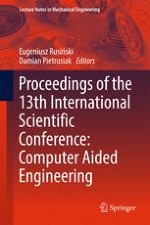2017 | OriginalPaper | Chapter
Study of the Causes of Boom Elements Cracking of Electric Demolition Machine with Use of Experimental and Numerical Methods
Authors : Damian Derlukiewicz, Maciej Cieślak
Published in: Proceedings of the 13th International Scientific Conference
Publisher: Springer International Publishing
Activate our intelligent search to find suitable subject content or patents.
Select sections of text to find matching patents with Artificial Intelligence. powered by
Select sections of text to find additional relevant content using AI-assisted search. powered by
